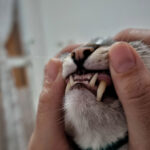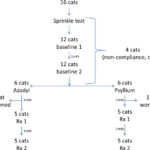The Manx cat, a breed celebrated for its taillessness and rounded appearance, is a subject of fascination for cat enthusiasts worldwide. This comprehensive guide delves into the breed standard of the Manx cat, providing an in-depth look at the characteristics that define this unique feline. Whether you are a breeder, a judge, or simply a lover of cats, understanding the breed standard is crucial to appreciating the Manx cat’s distinctive qualities.
Understanding the Manx Cat Standard
The overall impression of a Manx cat is one of roundness. This roundness is not just a superficial trait but is embedded in every aspect of their physical description, from the head to the rump. A Manx cat should present as alert, healthy, and surprisingly heavy for its size, with a clean, well-groomed coat. It’s important to note that Manx cats can be slow to mature, and this should be taken into consideration when evaluating younger cats.
Head and Ears: The Rounded Framework
The head of a Manx cat is distinctly round, featuring prominent cheeks and a jowly appearance, especially noticeable in adult males. This feature enhances the overall rounded aesthetic of the breed. In profile, the head is of medium length with a gentle dip from the forehead to the nose. The muzzle is well-developed, slightly longer than it is broad, and accompanied by a strong chin. A definite whisker break with large, round whisker pads adds to the breed’s characteristic look. The neck is short and thick, further contributing to the robust appearance.
Ears are wide at the base, tapering to rounded tips, and are medium-sized in proportion to the head. They are set widely apart and slightly outward. When viewed from behind, the ear set is said to resemble the rocker on a cradle, a unique breed-specific trait. Ear furnishings vary with coat length: Shorthair Manx cats have sparse furnishings, while Longhair Manx cats boast full ear furnishings.
Eyes: Large, Round, and Expressive
The eyes of the Manx are large, round, and full, contributing significantly to their expressive face. They are set at a slight angle towards the nose, with the outer corners positioned slightly higher than the inner corners, giving them an alert and curious expression. Eye color varies and is specified to complement the coat color, ranging from gold to copper, odd-eyed, blue-eyed, green, or hazel.
Body: Compact and Muscular Roundness
The body of the Manx cat is solidly muscled, compact, and well-balanced. Medium in size with a sturdy bone structure, the Manx is stout in appearance, characterized by a broad chest and well-sprung ribs. The consistent theme of curves and circles gives the Manx an impression of substantial build and resilience, powerful yet without any hint of clumsiness. Males are typically slightly larger than females.
A notable feature is the depth of flank, which is more pronounced than in other breeds, adding considerable depth to the body when viewed from the side. The back is short and forms a smooth, continuous arch from the shoulders to the rump, curving at the rump to enhance the desired round shape. The length of the back is proportional to the cat’s overall size, and the height of the hindquarters is equal to the body length. While males may be somewhat longer, the longer coat of the Longhair Manx over the rump and breeches can make the body appear longer.
Taillessness: The Defining Trait
Taillessness is perhaps the most defining characteristic of the Manx cat. In a perfect specimen, taillessness appears absolute. While a rise of bone at the end of the spine is permissible, it should not be so prominent that it interferes with the smooth, tailless appearance. The rump itself is exceptionally broad and round, completing the signature Manx silhouette.
Legs and Feet: Strength and Proportion
The legs of the Manx cat are heavily boned, with forelegs that are short and set well apart, emphasizing the broad, deep chest. The hind legs are significantly longer than the forelegs, featuring heavy, muscular thighs and substantial lower legs. This longer hind leg structure causes the rump to be noticeably higher than the shoulders, contributing to the arched back and unique gait of the breed. When viewed from behind, the hind legs are straight. The paws are neat and round, with five toes in front and four behind, proportionate to their robust build.
Coat: Length and Texture Variations
The Manx cat comes in both Shorthair and Longhair varieties, each with distinct coat characteristics.
Shorthair Coat
The Shorthair Manx has a double coat that is short and dense. It feels well-padded due to a longer, open outer coat and a close, cottony undercoat. This double coat provides insulation and protection. The coat may become thinner during warmer summer months. The texture of the outer guard hairs is somewhat hard with a glossy appearance. While a softer coat can occur in white and dilute colors due to a color/texture gene link, this softness should not be mistaken for the silky texture of the Longhair Manx.
Longhair Coat
The Longhair Manx also possesses a double coat, but it is of medium length, dense, and well-padded over the main body. The coat gradually lengthens from the shoulders to the rump, with breeches, abdomen, and neck-ruff typically being longer than the coat on the main body. The cheek coat is thick and full, and the collar-like neck-ruff extends from the shoulders, bib-like around the chest. Full and thick breeches down to the hocks are desirable in mature cats. The coat on the lower legs and head (except for cheeks) should be shorter than on the main body and neck-ruff but still dense and full in appearance. Toe tufts and ear tufts are considered desirable features. When comparing two Longhair Manx cats with equal type, preference is given to the cat with a fuller coat. The texture of the Longhair Manx coat is soft and silky, falling smoothly on the body yet remaining full and plush due to the double coat. A healthy glossy appearance is expected. Seasonal and age variations in coat are to be considered.
Color and Markings: A Spectrum of Possibilities
Manx cats are recognized in a wide array of colors and tabby patterns. However, certain color patterns indicating hybridization, such as chocolate, lavender, pointed patterns, or these combined with white, are not permissible in breed standards.
Recognized Manx Colors include:
- White: Pure glistening white with pink nose leather and paw pads. Eyes can be deep blue or gold to copper, or odd-eyed.
- Black: Dense coal black, sound from roots to tip, with black nose leather and black or brown paw pads.
- Blue: A preferred lighter shade of blue, one level tone, sound to the roots, with blue nose leather and paw pads.
- Red: Deep, rich, clear, brilliant red without shading, markings, or ticking, with brick red nose leather and paw pads.
- Cream: One level shade of buff cream without markings, sound to the roots, with pink nose leather and paw pads.
- Silver Varieties: Chinchilla Silver, Shaded Silver, Blue Smoke, Red Smoke, Cream Smoke, Black Smoke, Tortoiseshell/Dilute Tortoiseshell Smoke, Calico Smoke, Tortoiseshell & White Smoke, and Bi-Color Smoke. These colors involve a white undercoat with varying degrees of colored tipping.
- Tabby Patterns: Classic Tabby, Mackerel Tabby, Ticked Tabby, Patched Tabby, Spotted Tabby, Brown Patched Tabby, Blue Patched Tabby, Silver Patched Tabby, Blue-Silver Tabby, Blue-Silver Patched Tabby, Silver Tabby, Red Silver Tabby, Red Tabby, Cream Silver Tabby, Brown Tabby, Blue Tabby, and Cream Tabby. These patterns are recognized in various base colors and expressions.
- Tortoiseshell: Black brindled with red and/or shades of red.
- Calico and Dilute Calico: White with patches of black and red (Calico) or blue and cream (Dilute Calico), with white being predominant on underparts.
- Blue-Cream: Blue brindled with cream.
- Bi-Color: Solid Manx colors (Blue, Black, Red, Cream, Blue Smoke, Black Smoke, Red Smoke, Cream Smoke) with white.
- Tabby & White: All recognized Manx tabby colors and patterns with white.
- Tortoiseshell & White and Blue-Cream & White: Tortoiseshell or Blue-Cream with minimal white.
- OMC (Other Manx Colors): Any other color or pattern not resulting from hybridization (excluding chocolate, lavender, Himalayan pattern, or these with white).
Penalties and Disqualifications
Penalties in judging may be applied for:
- In Longhair Manx, a coat that lacks density, has a cottony texture, or is of one overall length.
Disqualifications include:
- Evidence of poor physical condition.
- Incorrect number of toes.
- Evidence of hybridization (unrecognized colors/patterns).
- Evidence of weakness in the hindquarters.
- In profile, a pronounced stop or nose break.
Conclusion: The Endearing Roundness of the Manx Cat
The Manx cat breed standard emphasizes a consistent theme of roundness, coupled with a sturdy, muscular build and the distinctive taillessness. This breed is not just about a missing tail; it’s about the overall harmony and balance of rounded features that define the ideal Manx. From the round head and body to the rounded rump, every aspect of the Manx cat contributes to its unique and appealing presence. Whether in shorthair or longhair, and across a spectrum of colors and patterns, the Manx cat remains a captivating breed, celebrated for its distinctive appearance and charming personality. This guide provides a thorough overview for anyone seeking to understand and appreciate the breed standards that shape the recognition and admiration for the remarkable Manx cat.
Note: This article is based on the provided breed standard text and aims to explain it in a more accessible and SEO-optimized format for an English-speaking audience. For the most accurate and up-to-date information, always refer to the official breed standards from recognized cat associations like the CFA.
No images were provided in the original text to include in this rewritten article.


